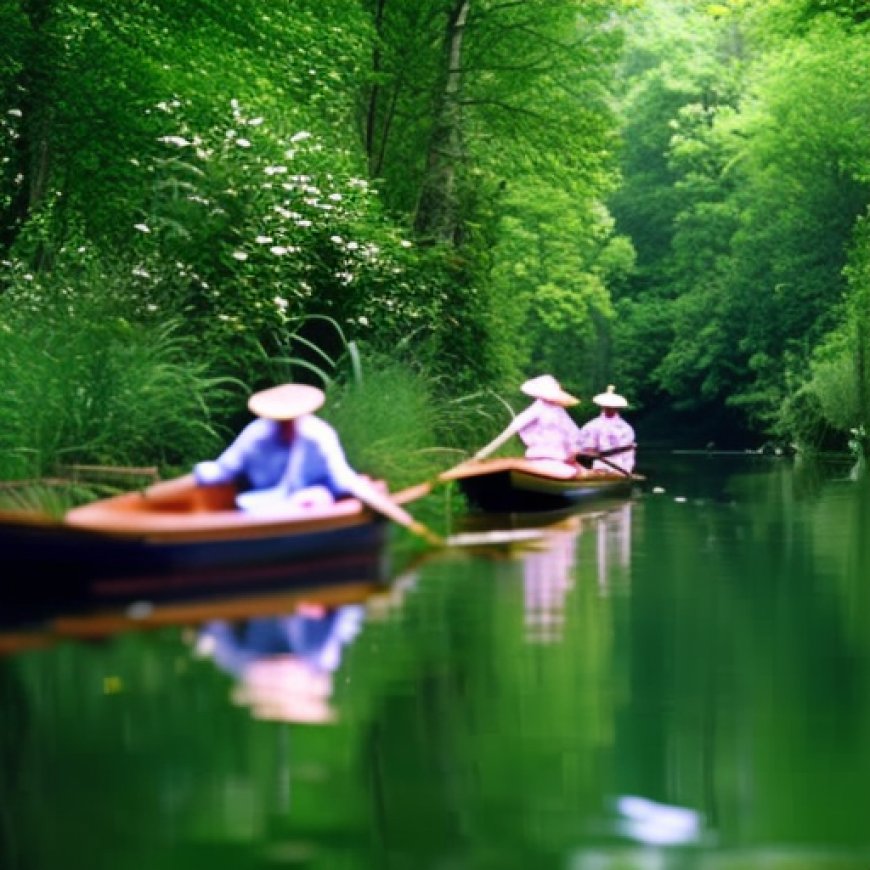Ecotourism Сlusters: Сooperating for People and Nature



Ecotourism Clusters: Harmonizing Nature Conservation and Local Economic Growth
Ecotourism offers more than an opportunity to explore unique landscapes. It allows travelers to immerse themselves in local life and connect with communities whose traditions, crafts, history, and way of living are shaped by surrounding nature.
This holistic approach capturing the “genius loci”, or spirit of a place, forms the backbone of ecotourism clusters in Belarus — an innovative model that harmonizes nature conservation and local economic growth.
What is an Ecotourism Cluster?
Ecotourism clusters bring together diverse stakeholders: nature reserves, business, government agencies, educational institutions, artisans, and volunteers.
By collaborating, members of an ecotourism cluster enhance the quality and variety of services while maintaining a shared commitment to environmental stewardship.
Clustering helps participants pool resources and expertise, ensuring that nature conservation, cultural heritage, and local economies all thrive together.
A Win-Win for All
An ecotourism cluster generates more economic value collectively than individual participants could produce on their own. Members promote each other’s services – comfortable accommodation, transportation, excursions, souvenirs – attracting the inflow of tourists and driving income growth across the network.
SDGs, Targets, and Indicators
-
SDG 8: Decent Work and Economic Growth
- Target 8.9: By 2030, devise and implement policies to promote sustainable tourism that creates jobs and promotes local culture and products.
- Indicator 8.9.1: Tourism direct GDP as a proportion of total GDP and in growth rate.
-
SDG 12: Responsible Consumption and Production
- Target 12.8: By 2030, ensure that people everywhere have the relevant information and awareness for sustainable development and lifestyles in harmony with nature.
- Indicator 12.8.1: Extent to which (i) global citizenship education and (ii) education for sustainable development (including climate change education) are mainstreamed in (a) national education policies; (b) curricula; (c) teacher education; and (d) student assessment.
-
SDG 14: Life Below Water
- Target 14.7: By 2030, increase the economic benefits to small island developing states and least developed countries from the sustainable use of marine resources, including through sustainable management of fisheries, aquaculture, and tourism.
- Indicator 14.7.1: Sustainable fisheries as a proportion of GDP in small island developing states, least developed countries, and all countries.
-
SDG 15: Life on Land
- Target 15.1: By 2020, ensure the conservation, restoration, and sustainable use of terrestrial and inland freshwater ecosystems and their services, in particular forests, wetlands, mountains, and drylands, in line with obligations under international agreements.
- Indicator 15.1.1: Forest area as a proportion of total land area.
Analysis
1. Which SDGs are addressed or connected to the issues highlighted in the article?
The issues highlighted in the article are connected to the following SDGs:
- SDG 8: Decent Work and Economic Growth
- SDG 12: Responsible Consumption and Production
- SDG 14: Life Below Water
- SDG 15: Life on Land
2. What specific targets under those SDGs can be identified based on the article’s content?
Based on the article’s content, the following specific targets can be identified:
- Target 8.9: By 2030, devise and implement policies to promote sustainable tourism that creates jobs and promotes local culture and products.
- Target 12.8: By 2030, ensure that people everywhere have the relevant information and awareness for sustainable development and lifestyles in harmony with nature.
- Target 14.7: By 2030, increase the economic benefits to small island developing states and least developed countries from the sustainable use of marine resources, including through sustainable management of fisheries, aquaculture, and tourism.
- Target 15.1: By 2020, ensure the conservation, restoration, and sustainable use of terrestrial and inland freshwater ecosystems and their services, in particular forests, wetlands, mountains, and drylands, in line with obligations under international agreements.
3. Are there any indicators mentioned or implied in the article that can be used to measure progress towards the identified targets?
The article mentions or implies the following indicators that can be used to measure progress towards the identified targets:
- Indicator 8.9.1: Tourism direct GDP as a proportion of total GDP and in growth rate.
- Indicator 12.8.1: Extent to which (i) global citizenship education and (ii) education for sustainable development (including climate change education) are mainstreamed in (a) national education policies; (b) curricula; (c) teacher education; and (d) student assessment.
- Indicator 14.7.1: Sustainable fisheries as a proportion of GDP in small island developing states, least developed countries, and all countries.
- Indicator 15.1.1: Forest area as a proportion of total land area.
Table: SDGs, Targets, and Indicators
| SDGs | Targets | Indicators |
|---|---|---|
| SDG 8: Decent Work and Economic Growth | Target 8.9: By 2030, devise and implement policies to promote sustainable tourism that creates jobs and promotes local culture and products. | Indicator 8.9.1: Tourism direct GDP as a proportion of total GDP and in growth rate. |
| SDG 12: Responsible Consumption and Production | Target 12.8: By 2030, ensure that people everywhere have the relevant information and awareness for sustainable development and lifestyles in harmony with nature. | Indicator 12.8.1: Extent to which (i) global citizenship education and (ii) education for sustainable development (including climate change education) are mainstreamed in (a) national education policies; (b) curricula; (c) teacher education; and (d) student assessment. |
| SDG 14: Life Below Water | Target 14.7: By 2030, increase the economic benefits to small island developing states and least developed countries from the sustainable use of marine resources, including through sustainable management of fisheries, aquaculture, and tourism. | Indicator 14.7.1: Sustainable fisheries as a proportion of GDP in small island developing states, least developed countries, and all countries. |
| SDG 15: Life on Land | Target 15.1: By 2020, ensure the conservation, restoration, and sustainable use of terrestrial and inland freshwater ecosystems and their services, in particular forests, wetlands, mountains, and drylands, in line with obligations under international agreements. | Indicator 15.1.1: Forest area as a proportion of total land area. |
Source: undp.org








